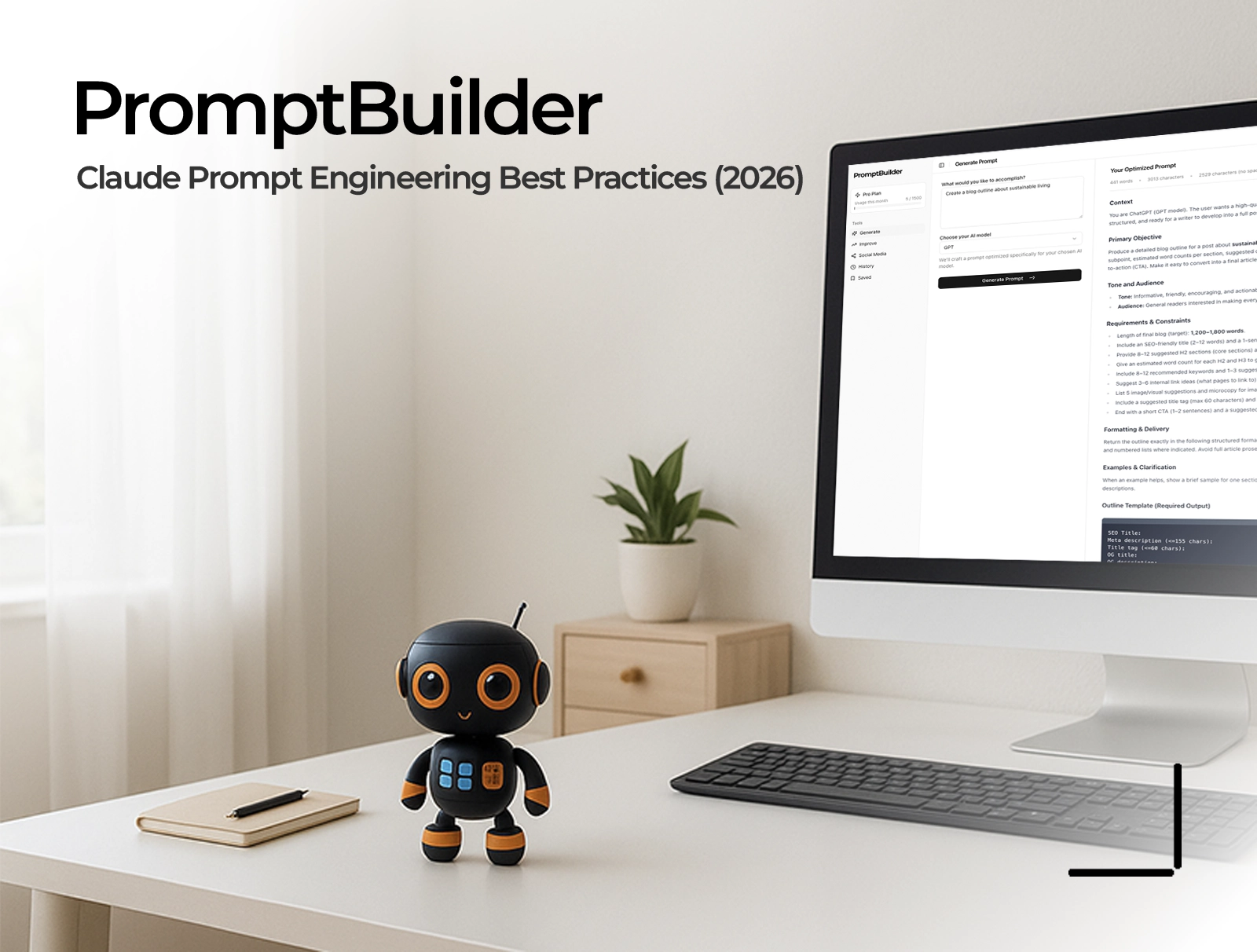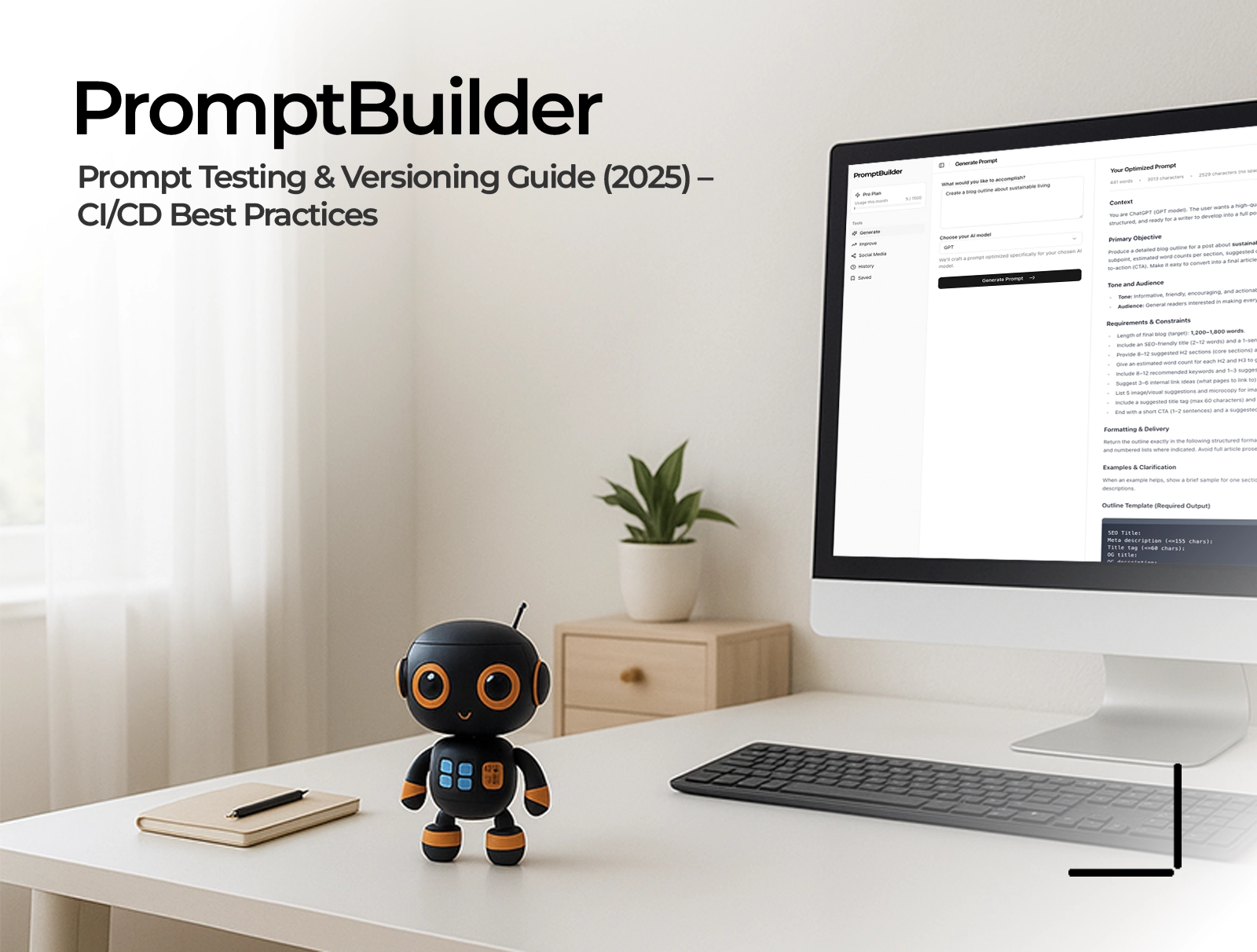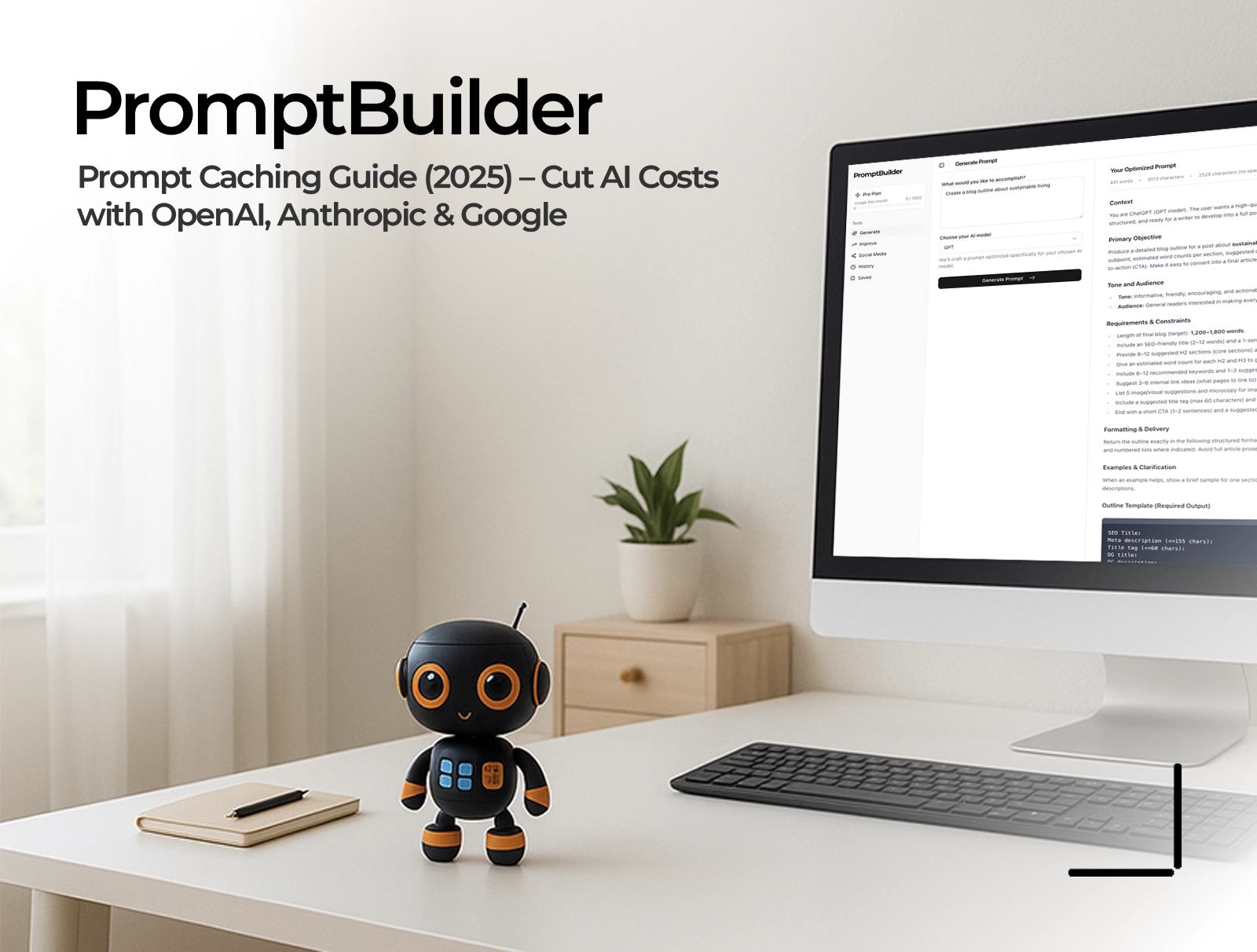Claude vs ChatGPT vs Gemini Prompting: Best Practices (2025)
If you’re serious about prompt engineering in 2025, you need to tailor your approach to the model you’re using. Claude, ChatGPT, and Gemini excel at different tasks, and the way you structure prompts should match those strengths. This guide gives you model‑specific best practices, side‑by‑side comparisons, and copy‑ready prompt patterns.
TL;DR verdict
- Pick Claude when you need deep reasoning, long documents, or critique.
- Pick ChatGPT for structured outputs, predictable formatting, and coding scaffolds.
- Pick Gemini for research, multimodal tasks, and source‑backed summaries.
Try this now: Test the same prompt across models in minutes with our tools - start with the ChatGPT Prompt Generator, then run variants in the PromptBuilder Dashboard.
Quick Comparison - What Works Best in Each LLM
| Area | Claude (Reasoning/Long Context) | ChatGPT (Structure/Formatting) | Gemini (Research/Multimodal) |
|---|---|---|---|
| Strengths | Analytical depth, stepwise reasoning, long context windows | Structured outputs, examples/few‑shot, stable formatting | Web/research synthesis, image + text inputs, citations |
| Best For | Analysis, planning, policy docs, critiques | Specs, tables, JSON, code scaffolds, content templates | Research summaries, fact‑checking, technical briefs |
| Prompt Style | Rich context + numbered reasoning steps + critique | Role + headings + numbered sub‑tasks + few‑shot | Research parameters + verification + multimodal cues |
| Examples | Ask for “assumptions, risks, mitigations” | Provide 1–3 examples for tone/format | Specify sources, data types, and output schema |
| Output Format | Bulleted sections + rationale + concise summary | Strict schemas (tables/JSON), bullet lists, checklists | Bulleted summaries with citations and limitations |
Claude - Best Practices for Reasoning and Long Context
Claude excels at structured analysis, extended context, and reflective critique.
- Provide comprehensive background and constraints up front
- Ask for step‑by‑step reasoning and a clear recommendation
- Invite critique and uncertainty flags; request alternative perspectives
- Use numbered sections; ask for assumptions, risks, and mitigations
- Favor depth over breadth; cap final answer length explicitly
Claude Prompt Pattern (copy‑ready)
Role: Senior analyst specializing in [domain].
Context:
- Objective: [primary goal]
- Background: [key facts and constraints]
- Audience: [decision-makers, level]
- Risks: [known risks or concerns]
Task:
1) Analyze [problem] using step-by-step reasoning
2) Surface key assumptions and uncertainties
3) Provide a recommendation with trade-offs
Output:
- Sections: Findings, Assumptions, Risks, Recommendation
- Max 350 words; concise, decision-focused
ChatGPT - Best Practices for Structured Outputs and Examples
ChatGPT is ideal when you need predictable formats, examples, and consistent structure.
- Set a clear role and output schema (headings, lists, tables, JSON)
- Break work into numbered sub‑tasks to reduce errors
- Provide 1–3 few‑shot examples for tone and structure
- Ask for validation (e.g., “check constraints before final”)
- For integration, request JSON or code blocks with specific keys
ChatGPT Prompt Pattern (copy‑ready)
You are a technical content editor.
Instructions:
1. Create a comparison table of [tools] with columns [A, B, C]
2. Write a 120–150 word summary highlighting key trade-offs
3. Provide a JSON object with {bestFor, risks, quickTips}
Examples:
- Tone: concise, neutral, actionable
- Table style: short phrases, no fluff
Constraints: Use markdown; keep all cells under 10 words.
Gemini - Best Practices for Research and Multimodal
Gemini shines for research tasks, verifiable summaries, and multimodal inputs (image + text).
- Define research scope, timeframe, and regions
- Request citations for major claims; call out limitations
- Specify input types (images, charts, datasets) when relevant
- Provide a structured deliverable (bullets + table + brief)
- Ask for verification and uncertainty notes
Gemini Prompt Pattern (copy‑ready)
Task: Research [topic] with recent sources.
Parameters:
- Timeframe: last 12 months
- Regions: North America + EU
- Sources: industry reports, peer-reviewed papers
Deliverable:
1) 8–10 bullet summary with inline citations [1], [2]
2) Table: Source | Claim | Strength | Link
3) 120-word executive brief including limitations
Verification: Flag assumptions and confidence level per claim.
Side-by-Side Prompt Structures (Templates)
CLAUDE
Context → Stepwise analysis → Assumptions → Risks → Recommendation (≤350 words)
CHATGPT
Role → Numbered sub‑tasks → Few‑shot examples → Output schema (markdown/JSON)
GEMINI
Scope/timeframe/regions → Citations → Table + brief → Verification/limitations
Workflow: Test Prompts Across Models (BIV Loop)
Use the Baseline → Improve → Verify loop to quickly converge on a winning prompt.
- Baseline: Draft for your primary model; run once in each LLM
- Improve: Adjust per-model (structure for ChatGPT, depth for Claude, citations for Gemini)
- Verify: Compare accuracy, format compliance, and cost/time
Tools to speed this up:
- Generate variants with the ChatGPT Prompt Generator
- Run and compare in the Dashboard
- Save your winners for reuse in Saved Prompts
FAQs (2025)
What are the “Claude prompt engineering best practices 2025” in one line?
Rich context + numbered reasoning + critique + concise recommendation.
Quick “ChatGPT prompt engineering tips 2025”?
Role + sub‑tasks + few‑shot + strict output schema (tables/JSON) + constraint checks.
“Gemini AI prompt engineering 2025” - what matters most?
Clear research scope, citations, and verification; use multimodal inputs when relevant.
Call to Action
Want to see which model performs best for your task? Use PromptBuilder to test the same prompt across Claude, ChatGPT, and Gemini.
- Start here: ChatGPT Prompt Generator
- Then compare outputs: Dashboard Generator
- Keep your best versions: Saved Prompts
Build once, ship everywhere - across models.


